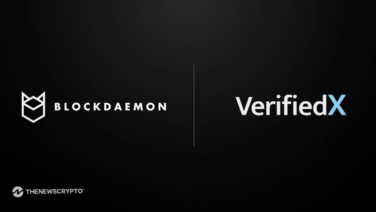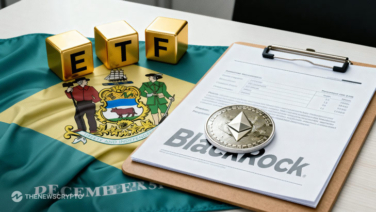Ethereum’s scaling issue is not a new topic of discussion in the crypto realm; this pioneering smart contract blockchain is notorious for high gas fees due to its limited throughput during periods of high activity.
One of the main reasons behind the limited scalability is the sequential nature of Ethereum’s runtime environment, the Ethereum Virtual Machine (EVM). To provide some more context, the EVM is designed to operate as a Turing-complete virtual machine, enabling the secure execution of smart contracts on the Ethereum blockchain.
While this runtime environment has been efficient and reliable, it processes transactions sequentially. This means that smart contract executions on the Ethereum blockchain are processed one after the other, hence taking longer, especially during high-volume activity.
In the long run, Ethereum users have to bear with longer waiting times and higher gas costs, as was the case when CryptoKitties first clogged the Ethereum network in 2017, and more recently during the DeFi and NFT market craze of 2021.
Parallel EVM: A New Dawn for the DApp Ecosystem
Over the past few years, several initiatives have been launched to solve Ethereum’s scalability challenge, including alternative Layer 1 chains such as Solana and Layer rollups like Arbitrum and Optimism.
While these scalability solutions have played a notable role in enhancing the transaction throughput, a more novel scaling solution is currently the talk of the DeFi community; parallel EVM chains such as Sui, Meter, and Nomad are changing the game by introducing DApp building ecosystems that can process multiple smart contract transactions simultaneously.
Let’s put it into perspective; in the standard EVM model, if Alice and Bob submit transactions to send X amount of an Ethereum native token to different addresses, the EVM will process the transactions in a sequential order depending on which transaction was first initiated. This means one of them would have to wait longer for their smart contract order to be executed despite the transactions being independent of each other.
However, in a parallel EVM model, the two transactions would be submitted at the same time, reducing the waiting period and gas cost. The analogy is similar to that of a multi-core CPU where each core is able to process or execute independent instructions at the same time, which has significantly increased the processing power of modern-day computers.
There are two main approaches to EVM parallelization: optimistic parallelism and the state access method.
Optimistic parallelism: As the name suggests, an optimistic parallel EVM model initially assumes that all transactions are naturally independent. Once the transaction is executed, the model then verifies the assumption and rectifies any dependent transactions that might have been executed independently. The caveat with this model is that it could lead to a lot of conflict post transaction execution, especially when processing dependent transactions.
State Access Method: Unlike the former, this approach proactively sorts out dependent and independent transactions. This enables smart contracts to execute dependent transactions in a sequential format while independent transactions are processed in tandem. On the upside, there are no retroactive modifications but on the downside it takes more resources and time for developers to sort out the transactions proactively.
Parallel EVM Smart Contract Blockchains
Although a new solution to Ethereum’s scaling bottlenecks, some DApp-compatible blockchains are already leading the way. This section will briefly highlight three main Parallel EVM chains that are using this approach to solve Ethereum’s scalability limitations.
Sui
With a total value locked (TVL) of $751 million, the Sui blockchain ecosystem is designed as a Parallel EVM chain, leveraging the state access method. Notably, this smart contract network also features an object-centric data model to enhance the clarity in the proactive ordering of independent and dependent transactions. As of writing, there are over 25 DApps building on the Sui blockchain ecosystem, most of which are Dexes and yield platforms.
Meter
This is another EVM-compatible chain that has already integrated parallel transaction submission on its mainnet. What further stands out about Meter’s approach to Ethereum’s scalability is the project’s upcoming crypto optimized database that will enhance I/O performance by 3x and reduce disk footprint to ⅓ of the pebbleDB used by Ethereum today. Other distinguishable features include Front Running/MEV Resistance, multi-asset validation, and higher security and liveliness, thanks to a combination of PoW and PoS consensus.
Monad
Unlike the Sui blockchain network, Monad leverages the optimistic parallelism method and claims to support over 10,000 transactions per second. The project’s co-founder and CEO, Keone Hon, spoke to Blockworks earlier this year, emphasizing on the importance of using separate threads to enable simultaneous transactions by virtual machines such as the EVM, all while maintaining a simple UI/UX for DeFi natives.
“Monad can basically take transaction formats that are exactly the same as Ethereum and then, under the hood, implement parallelism without any changes from the user perspective.” said Hon.
Conclusion
The DApp ecosystem has grown significantly over the past four years, and it’s clear that mass adoption cannot occur until scalability issues are resolved. While some DeFi enthusiasts might advocate for migrating to cheaper DApp ecosystems, the reality is that Ethereum remains the most prominent smart contract blockchain, holding over 50% of the total value locked (TVL) according to DeFi Llama.
Therefore, it makes more logical sense to develop scaling solutions that enhance Ethereum’s core functionalities or address multiple challenges simultaneously, such as EVM compatibility and parallel transaction processing.








